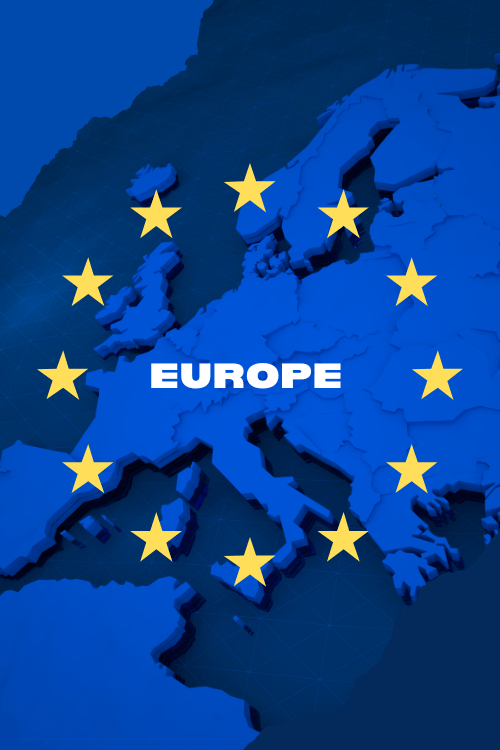eSIM
How Much Data Do I Need On My eSIM?
How much data do you need?
Take our quick quiz at the bottom of this post to find out how much data you will need while travelling.
Understanding Mobile Data
Before we dive into estimating your data usage, let’s first understand what mobile data is and how it works.
What is Mobile Data?
Mobile data (or cellular data) is any information your device sends or receives using a cellular connection.
It enables you to connect to the internet without relying on traditional fiber, cable, or DSL connections. Instead, mobile data transmits through cellular networks such as 3G, 4G, or 5G.
How Does Mobile Data Work?
Mobile data relies on cellular signals to transmit data to and from your device. The data you send (upload) or receive (download) broadcasts to or from your nearest cell tower. The “G” in 3G, 4G, and 5G stands for “generation,” and each generation sets a new standard for data transmission, with higher generations offering faster speeds and improved performance.
How is Mobile Data Measured?
Mobile data is measured in kilobytes (KB), megabytes (MB), and gigabytes (GB). These units build upon each other, with 1000 KB equaling 1 MB, and 1000 MB equaling 1 GB. Anything requiring your device to send or receive internet data will consume KBs, MBs, or GBs, depending on the activity.
Estimating eSIM Data Usage
Now that you understand what mobile data is, let’s explore how to estimate your daily data usage while traveling. Your data needs will largely depend on the activities you plan to engage in and how frequently you’ll be using your device.
Factors Affecting Data Usage
Several factors can influence your mobile data consumption:
- Type of Activities: Activities like browsing the internet and checking emails consume significantly less data than streaming video content or participating in video calls.
- Location and Coverage: The country you’re visiting and the coverage provided by your chosen carrier can impact data speeds and, consequently, your data usage.
Data Usage for Common Activities
To help you estimate your travel data needs, here’s a breakdown of how much data some common activities typically consume:
Browsing the Internet
Web browsing is a relatively low-data activity. Each page you visit averages around 1-3 MB, and if you browse continuously for an hour, you’ll use roughly 50 MB.
Checking Emails
Checking your email is another low-data activity. Even if you check your email daily, you’ll only use up to around 20 MB per email (more if you upload or download attachments).
Watching Netflix
On mobile, Netflix uses around 1 GB of data for four hours of streaming time. By default, Netflix balances data usage and video quality, helping to limit the amount of data you use while streaming. If you want to watch in HD, you’ll use up to 1 GB every 20 minutes.
Streaming YouTube Videos
YouTube uses around 500 MB per hour while streaming in standard definition. If you want to stream in 4K, you’ll use up to 16 GB per hour.
Using Google Maps
You’re bound to use Google Maps when you’re abroad. You can expect to use around 3-5 MB of mobile data per hour, but there’s an easy hack to use less: download your maps in offline mode.
Streaming Music on Spotify
The right playlist is a travel essential. With Spotify’s default setting, you’ll use around 43 MB of data per hour. However, you can download your music ahead of time to listen to it offline.
Scrolling Social Media
The amount of data you spend scrolling social media depends on the type of content. For example, a video app like TikTok will use much more data than Twitter or Facebook. Estimates suggest:
- X (Twitter): 360 MB per hour
- Facebook: 480 MB per hour
- Instagram: 600 MB per hour
- Snapchat: 720 MB per hour
- TikTok: 840 MB per hour
Messaging
Messaging apps like WhatsApp and Facebook Messenger use around 50 MB of data per hour. Keep in mind that if you’re exchanging photos, videos, or voice notes, you’ll consume more data.
Video Calls
Video calls can be data-intensive, using up to 200-300 MB per hour.
To summarize, here’s an estimate of how much data these common activities might consume:
| Activity | Data Usage |
|---|---|
| Internet and email | 50 MB per hour |
| Social media | 600 MB per hour |
| Netflix | 250 MB per hour |
| YouTube | 500 MB per hour |
| Streaming music | 43 MB per hour |
| Instant messaging | 50 MB per hour |
| Video calls | 250 MB per hour |
Remember, these are approximate values, and your actual data usage may vary.
Finding Your Data Usage
The easiest way to determine how much data you need is to analyze your daily internet activities and see where you spend most of your data. Here’s how to check your data usage on your smartphone:
On iPhone
- Go to Settings > Cellular or Settings > Mobile Data.
- Scroll down to see app consumption.
On Android
- Go to Settings > Connections > Data Usage.
- Tap Mobile Data Usage.
- Scroll down to see app consumption.
Limiting Data Usage
If you find that you’re using too much mobile data, you can set up data usage limits on your smartphone to help keep your activities in check.
On iPhone
- Go to Settings > Cellular > Mobile Data.
- Tap your SIM or eSIM.
- Turn on Low Data Mode.
On Android
- Go to Settings > Connections > Data Usage
- Tap Data Saver.
- Turn on Data Saver.
Avoiding Roaming Fees with eSIM
Mobile data should be the last thing on your mind when you travel. However, if you’re not careful, unexpected roaming charges can add up quickly.
Data roaming starts when you travel outside your home network. When you roam, you operate as a guest of a foreign provider’s network, and your call, text, and data services get charged a different, usually higher, rate. If you’ve ever received an outrageous roaming bill, you know what we mean!
One way to avoid roaming charges is to use an eSIM when you travel. An eSIM allows you to connect like a local and access data at a fraction of the typical roaming cost. eSIMs from providers like esim4.com are prepaid – you get a set amount of data (e.g., 1 GB, 3 GB, 5 GB, etc.) to use during your trip.
Ready to stay connected without roaming fees? Find an eSIM for your next trip in the esim4.com store.
Staying connected while traveling is crucial, but unexpected roaming fees can quickly turn your mobile data usage into a nightmare. By understanding how mobile data works, estimating your data needs based on your travel activities, and leveraging the convenience of eSIMs, you can ensure a seamless and cost-effective connected experience during your journeys abroad.
Mobile Data Needs Quiz
Question 1: What type of activities do you plan to do most while traveling?
- A) Browsing the web and checking emails
- B) Streaming videos (YouTube, Netflix)
- C) Using social media (Instagram, TikTok)
- D) Video calls (Zoom, Skype)
Question 2: How many hours per day do you expect to spend on your device?
- A) 1-2 hours
- B) 3-4 hours
- C) 5-6 hours
- D) More than 6 hours
Question 3: Do you plan to use music streaming services (Spotify, Apple Music)?
- A) No, I’ll listen offline or not at all
- B) Yes, but only occasionally
- C) Yes, I’ll stream regularly
Question 4: Will you be using navigation apps like Google Maps?
- A) No, I’ll use paper maps or download maps beforehand
- B) Yes, occasionally for directions
- C) Yes, frequently for exploring new areas
Question 5: How often do you send or receive emails?
- A) Rarely, just a few times a week
- B) Daily, but mostly text-only emails
- C) Frequently, including attachments
Scoring Your Results:
Tally Your Answers:
Mostly A’s: Low Data User
Estimated Data Needs: 300 MB – 1 GB per day
Recommendation: Stick to browsing and occasional email checks.
Mostly B’s: Moderate Data User
Estimated Data Needs: 1 GB – 3 GB per day
Recommendation: Consider streaming music and videos but monitor your usage.
Mostly C’s: High Data User
Estimated Data Needs: 3 GB – 5 GB per day
Recommendation: Be cautious with video streaming and social media; consider an eSIM for extra data.
Mostly D’s: Very High Data User
Estimated Data Needs: 5 GB+ per day
Recommendation: You might need a substantial data plan; consider multiple options like local SIMs or eSIMs.







